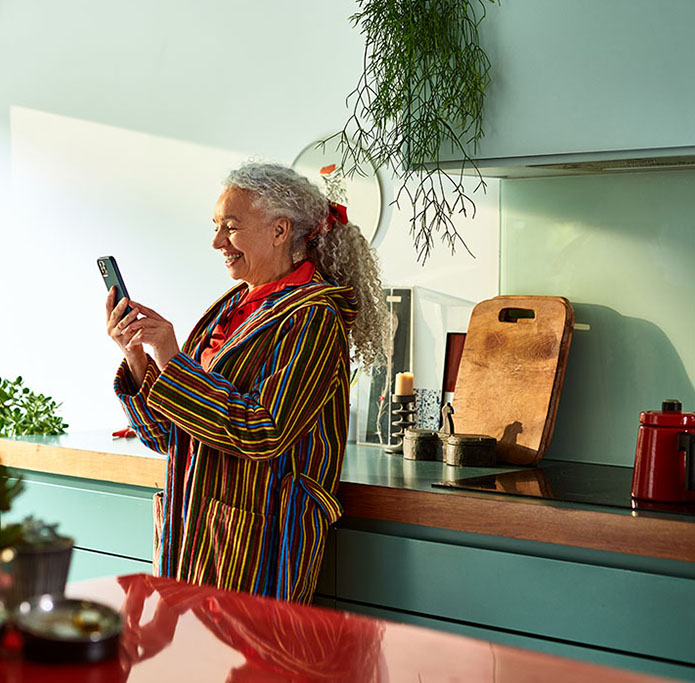Are you buying more to perk yourself up? You aren’t alone. Since the start of COVID, there’s been an increase in online shopping1. But, if you want to get a handle on your add-to-cart habit, understanding why you spend money, can help bring your purchasing patterns in line with your financial goals.
We often talk about money in terms of dollars and cents, but the subject can sometimes run deeper than just numbers. Frivolous spending as a result of your emotional state is more common than you might think: one study found that more than 81 % of Australians spend in order to seek comfort2, suggesting that our spending patterns are created by more than needs alone.
Having an uncontrollable urge to spend can have a negative impact on your finances – especially if it’s putting a dent in your financial goals. One way to curb this spending habit is to understand your triggers and put some specific steps in place to regain control.

What is unconscious spending?
Unconscious spending is the act of spending money without careful thought; sometimes it may even be done on impulse. Whether it’s the latest pair of designer shoes or a new set of golf clubs, it’s the type of spending that seems to happen almost outside of your control – and often, outside of your budget. But unconscious spending doesn’t only happen with expensive, big-ticket or one-off items.
“Unconscious spending can quite often be [due to] a lot of those daily activities that people are completely unaware of and [they underestimate] the impact it can have on their budget,” explains Daniel O’Rourke, an AMP financial adviser. “It could be inadvertently buying a muffin when you pick up your morning coffee. You could be buying lunch from a local cafe, even if you’re working from home because it’s easy and convenient to do so. It’s spending where people may not even think twice about the cost associated with it because it might seem immaterial, but collectively, it adds up.”
Common triggers for unconscious spending habits
There’s a range of emotional triggers that may tempt us into spending more than we intend to. Research has found that some people spend money when they’re feeling sad3 and will pay more for an item if they’re feeling this way.
Boredom can also be a significant trigger: a study into comfort spending found that 47% of Australians admit to purchasing because they’re bored4. The monotony of COVID-19, coupled with a need to delay many plans for travel and other experiences, could be a perfect storm for boredom-induced spending.
Pinpoint your spending patterns and triggers
Still unsure why you spend the way you do? These pointers may help you to identify your triggers...
1. Uncover your spending habits
Looking for a routine or pattern in your spending can offer some valuable clues and help you control your spending. What things do you typically purchase on impulse: is it clothing or kombucha? Does your unconscious spending usually represent big amounts or small amounts of money? Is it frequent, or more likely to be done in a short burst? Asking yourself these questions could uncover a few commonalities.
2. Look closely for emotional spending cues
Are there certain times of the day that you’re more likely to spend? Does it often happen during times of boredom or is it more likely to happen when you’re stressed or distracted? Do you tend to spend on credit as opposed to dipping into your savings or using cash?
By isolating some of the key behaviours that surround your unconscious spending, you can better understand your personal purchasing triggers.
3. Ask yourself: why do I feel like spending money?
The way we feel when we spend money may be different for everyone, but knowing the reasons why you’re partial to purchasing at a certain time, or as a result of a certain feeling, can help you gain more clarity around your triggers.
“A lot of it comes down to the ‘why’,” O’Rourke explains. “If you have a propensity to just go off and spend frivolously, the question to ask would be, ‘Why does this give me joy?’ I guess the questions then are: ‘How does this impact my budget?’, ‘How does this impact my long-term goals?’, ‘Is this within budget?’ and ‘Do I really need this?’”
If you get closer to understanding the feeling you get when purchasing, you can try to replicate that feeling elsewhere, without needing to spend.
Getting on top of unconscious spending
Pinpointing your personal spending triggers is the first step towards doing something about unconscious spending. These two approaches can help you get on top of the habit:
1. Become more money-mindful
O’Rourke explains that setting specific and achievable financial goals is a great way to gain more mindfulness around your money. Without a clear end point to aim for, when it comes to spending, it’s difficult to know how much is too much. By creating an endpoint – or goal – for your money, you’re more likely to focus your aim.
To stay on track, create and stick to a successful budget. If you have a clear understanding of how much is coming in and going out, you’ll have a greater sense of control over your spending decisions.
2. Put your money where you can see it
For some, the ease of online transactions is exactly what allows them to overlook the fact that they’re actually spending money.
“There’s a tendency now to use things like Zip and Afterpay,” O’Rourke says. “We’re a cashless society and it’s as easy as tap-and-go.”
If you tend to spend without thinking, you might revert to cash or direct debit payments where possible to remind yourself that your money is real and tangible.
Source: Mozo: Mozo’s Comfort Spending Report - 2019
1 https://www.ampcapital.com/au/en/insights-hub/articles/2020/august/econosights-the-outlook-for-consumers
2 Mozo: Mozo’s Comfort Spending Report - 2019
3 NCBI: Misery is Not Miserly: Sad and Self-Focused Individuals Spend More
4 Mozo: Mozo’s Comfort Spending Report - 2019
According to the research...
-
81%
of Australians spend in order to seek comfort
-
47%
admit to purchasing because they’re bored
-
$25.5 billion
the amount Australians spend annually to stave off boredom
Important information
Any advice and information is provided by AWM Services Pty Ltd ABN 15 139 353 496, AFSL No. 366121 (AWM Services) and is general in nature. It hasn’t taken your financial or personal circumstances into account. Taxation issues are complex. You should seek professional advice before deciding to act on any information in this article.
It’s important to consider your particular circumstances and read the relevant Product Disclosure Statement, Target Market Determination or Terms and Conditions, available from AMP at amp.com.au, or by calling 131 267, before deciding what’s right for you. The super coaching session is a super health check and is provided by AWM Services and is general advice only. It does not consider your personal circumstances.
You can read our Financial Services Guide online for information about our services, including the fees and other benefits that AMP companies and their representatives may receive in relation to products and services provided to you. You can also ask us for a hardcopy. All information on this website is subject to change without notice. AWM Services is part of the AMP group.







